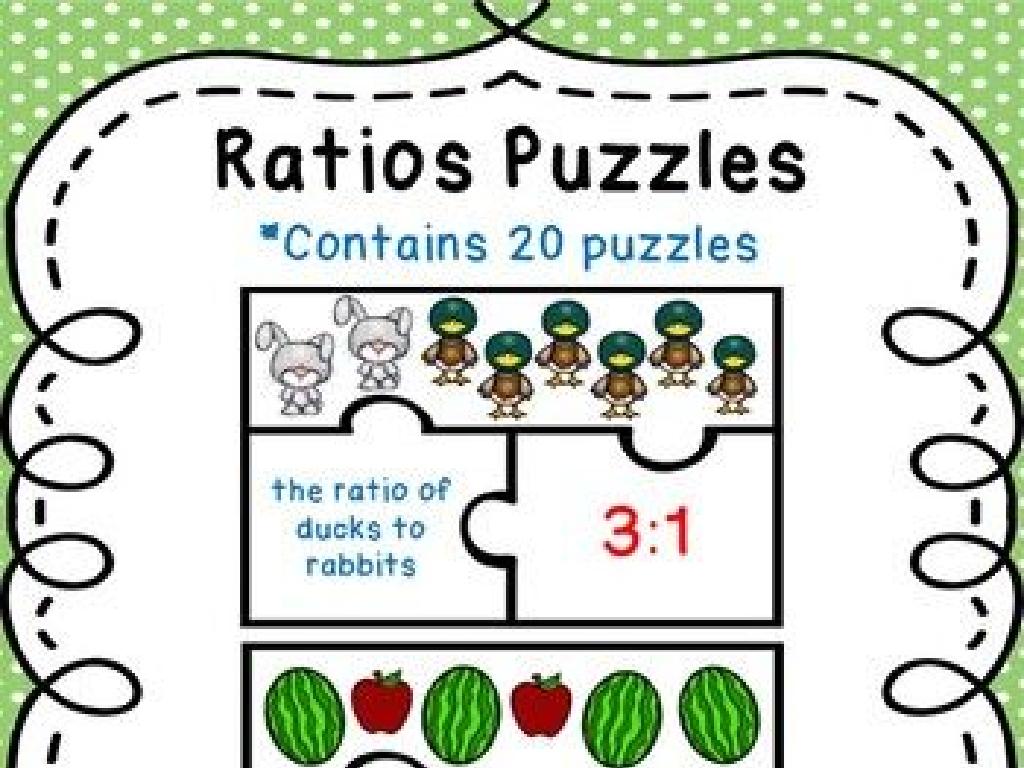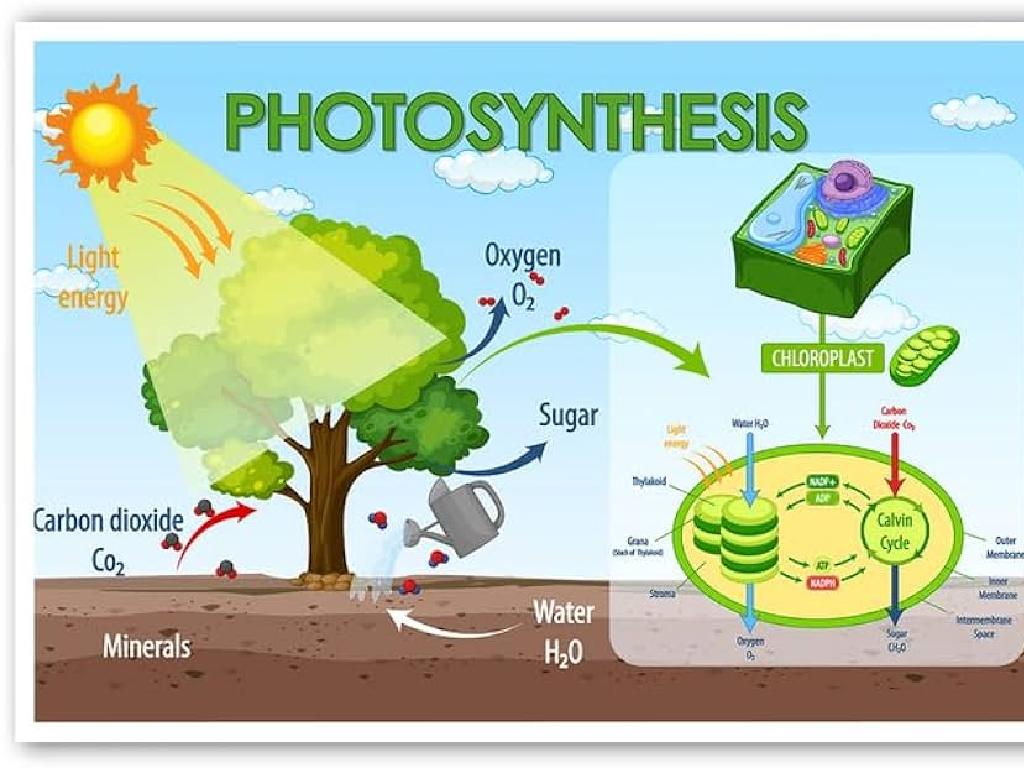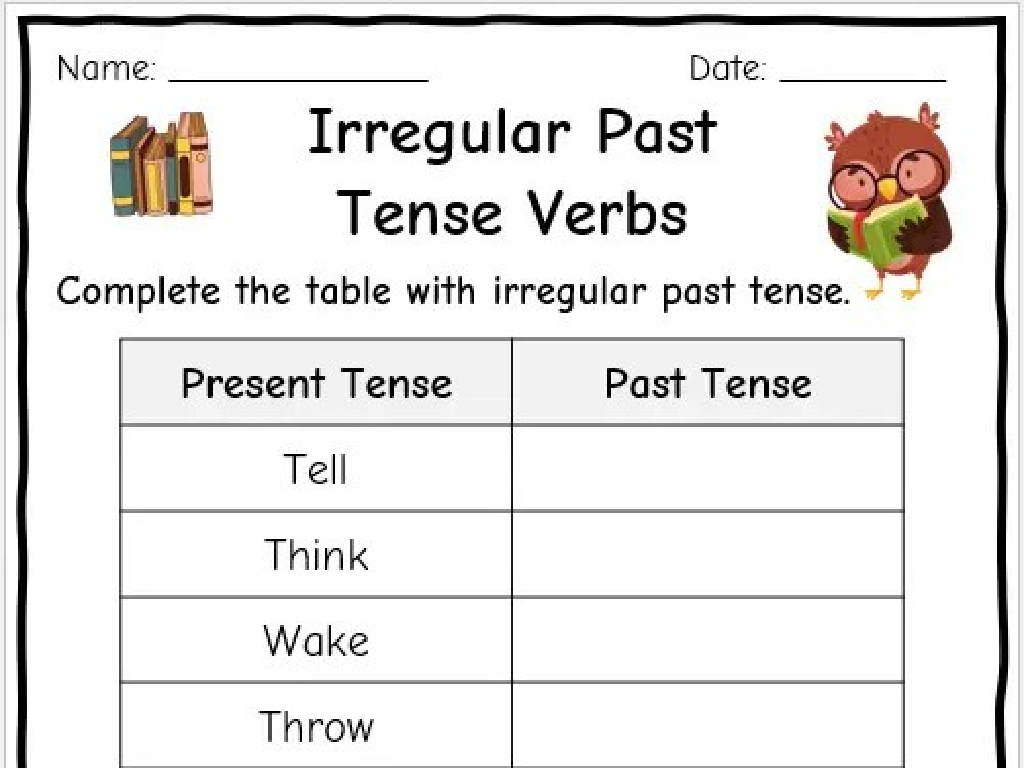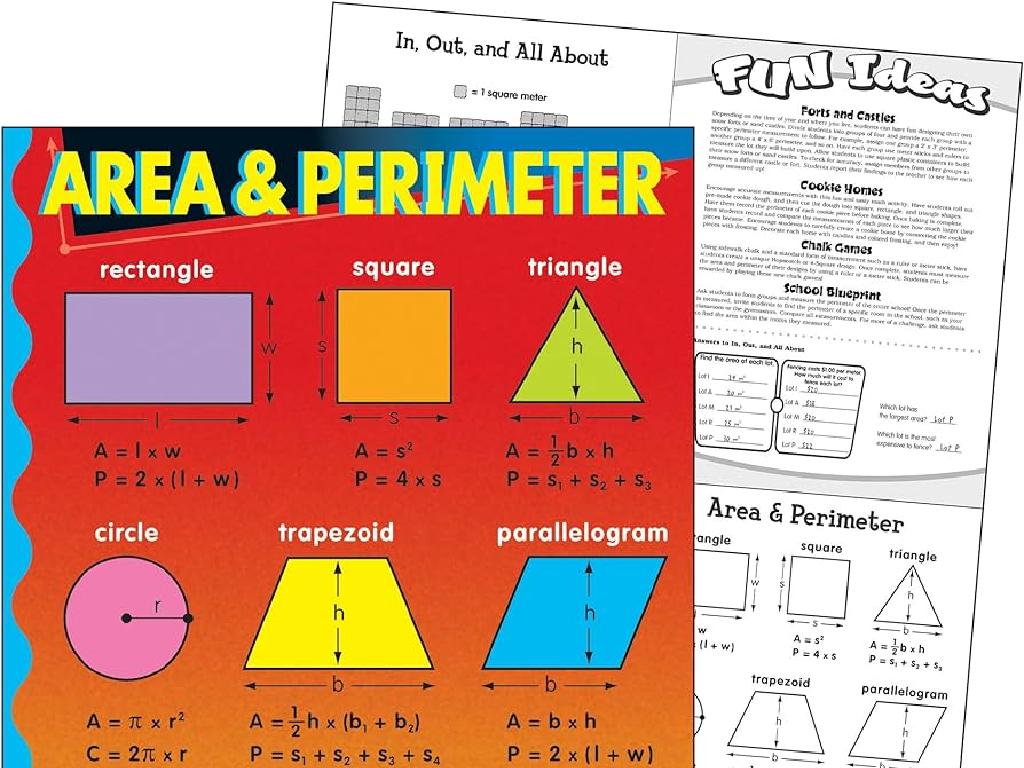Choose Between Adjectives And Adverbs
Subject: Language arts
Grade: Fifth grade
Topic: Adjectives And Adverbs
Please LOG IN to download the presentation. Access is available to registered users only.
View More Content
Adjectives vs. Adverbs
– Discover adjectives and adverbs
– Adjectives describe nouns
– Words like ‘happy’ describe things: a happy dog
– Adverbs modify verbs, adjectives, and other adverbs
– Words like ‘quickly’ describe actions: runs quickly
– Examples in sentences
– ‘The dog barks loudly.’ vs. ‘A loud dog.’
|
This slide introduces the basic concepts of adjectives and adverbs to the students. Adjectives are words that describe nouns, giving us more information about things, people, or places. Adverbs, on the other hand, modify verbs, adjectives, or other adverbs, often ending in ‘-ly’ and telling us how, when, where, or to what extent something is done. Use sentence examples to illustrate the difference, such as ‘The dog barks loudly’ (adverb) versus ‘A loud dog’ (adjective). Encourage students to think of their own examples and to be ready to identify adjectives and adverbs in sentences during class activities.
Understanding Adjectives
– Adjectives modify nouns
– They give more information about nouns, like ‘The TALL tree’ or ‘A RED apple’.
– Answer ‘Which?’, ‘What kind?’, ‘How many?’
– ‘Which dog? The SPOTTED dog.’ ‘What kind of noise? A SCARY noise.’ ‘How many pencils? THREE pencils.’
– Examples: QUICK, LOUD, FIVE
– ‘QUICK fox’ tells us how the fox moves. ‘LOUD noise’ tells us the volume. ‘FIVE apples’ tells us the count.
|
This slide introduces adjectives to the students, explaining their role in sentences as words that describe or modify nouns. It’s crucial to illustrate with clear examples that adjectives can describe qualities, identify specific items, and quantify objects. Use the examples provided to show how adjectives can change the meaning of a noun and make it more specific. Encourage students to think of their own examples and to be prepared to identify adjectives in sentences during class activities.
Exploring Adverbs
– Adverbs modify verbs, adjectives, adverbs
– They tell us more about how someone does something.
– They answer ‘How?’, ‘When?’, ‘Where?’
– Adverbs help us understand the action better.
– Example: ‘He ran QUICKLY’
– QUICKLY shows how he ran.
– Example: ‘We will meet THERE’
– THERE indicates the place of meeting.
|
This slide introduces the concept of adverbs to the students, explaining their role in a sentence. Adverbs are words that describe or modify verbs, adjectives, or other adverbs and are crucial for adding detail and depth to writing. They can tell us how an action is performed, when it happens, where it takes place, or to what extent an action is performed. Use examples like ‘He ran QUICKLY’ to show how adverbs modify verbs and ‘We will meet THERE’ to demonstrate adverbs modifying the verb by indicating place. Encourage students to come up with their own sentences using adverbs to describe ‘how’, ‘when’, ‘where’, and ‘to what extent’ something is done.
Identifying Adjectives in Sentences
– Find adjectives in example sentences
– ‘The COLORFUL balloons floated in the SKY.’
– COLORFUL describes balloons, SKY tells us which sky
– ‘She has a HUGE collection of STICKERS.’
– HUGE describes the size of the collection
– Ask students to identify adjectives
|
This slide is aimed at helping students recognize adjectives within the context of a sentence. Begin by explaining that adjectives are words that describe nouns or pronouns. They can tell us what kind, how many, or which one. Use the provided sentences to illustrate how adjectives give more detail about the nouns. In the first sentence, ‘COLORFUL’ describes the appearance of the balloons, and ‘SKY’ specifies which sky. In the second sentence, ‘HUGE’ gives us an idea of the size of the sticker collection. Encourage students to find and underline the adjectives in these sentences. As an activity, students can work individually or in pairs to identify adjectives in sentences from their reading books or create their own sentences using adjectives.
Spotting Adverbs in Sentences
– Understanding adverbs
– Adverbs describe how actions are done
– ‘He QUICKLY finished his homework.’
– QUICKLY tells us how he finished homework
– ‘She sings VERY beautifully.’
– VERY emphasizes how beautifully she sings
– Practice identifying adverbs
|
This slide is aimed at helping students recognize adverbs in sentences. Begin by explaining that adverbs are words that modify verbs, adjectives, or other adverbs, often ending in ‘-ly’. They describe how, when, where, and to what extent an action is performed. Use the examples provided to illustrate how ‘quickly’ modifies the verb ‘finished’ to tell us the speed of completing homework, and ‘very’ modifies ‘beautifully’ to intensify the manner of singing. Encourage students to find the adverbs in the sentences and explain their purpose. For the activity, have students work individually or in pairs to identify adverbs in sentences from a book or story they are currently reading. This will reinforce their understanding and application of adverbs in language.
Choosing Between Adjectives and Adverbs
– Deciding on adjectives or adverbs
– Adjectives describe nouns
– ‘The colorful balloon floated away.’ – ‘colorful’ describes the noun ‘balloon’.
– Adverbs describe verbs, adjectives, adverbs
– ‘She quickly ran to school.’ – ‘quickly’ describes the verb ‘ran’.
– Practice with examples
– ‘The extremely shy kitten hid.’ – ‘extremely’ describes the adjective ‘shy’.
|
This slide is aimed at helping students understand the difference between adjectives and adverbs and when to use each. Adjectives are used to describe nouns, which are people, places, things, or ideas. Adverbs, on the other hand, modify verbs, adjectives, or other adverbs, often ending in ‘-ly’. Provide clear examples for each case and create practice sentences where students can identify and use adjectives and adverbs correctly. Encourage students to think about what is being described in a sentence to decide whether to use an adjective or an adverb. During the lesson, engage the class in creating sentences together and discuss why each word choice is appropriate.
Class Activity: Adjective or Adverb?
– Play ‘Adjective or Adverb?’ game
– Listen to the word I say
– Hold up ‘A’ for adjective, ‘V’ for adverb
– Discuss our choices together
– Understand why a word is an adjective or an adverb
|
This interactive class activity is designed to help students differentiate between adjectives and adverbs in a fun and engaging way. Prepare signs with ‘A’ and ‘V’ beforehand for the students to use. As you say a word, students will hold up the sign corresponding to what they think the word is: ‘A’ for adjective, which describes a noun, or ‘V’ for adverb, which usually modifies a verb. After each word, take the time to discuss why the word is an adjective or an adverb, providing examples of its use in a sentence. This will reinforce their understanding and give them immediate feedback on their choices. Possible words to use: ‘quickly’ (adverb), ‘happy’ (adjective), ‘silent’ (adjective), ‘beautifully’ (adverb), ‘loud’ (adjective), ‘carefully’ (adverb).
Class Activity: Adjectives vs. Adverbs
– Write sentences with adjectives and adverbs
– Circle adjectives, underline adverbs
– Partner sharing and discussion
– Share your sentences, listen to your partner’s sentences, and talk about the words you used.
– Reflect on the usage of each
– Think about how adjectives and adverbs change the meaning of a sentence.
|
This slide introduces a writing exercise aimed at helping students understand the difference between adjectives and adverbs. Students will write their own sentences, using both adjectives and adverbs, and then visually distinguish between them by circling and underlining. After writing, they will pair up to share their sentences and discuss the role of each circled or underlined word. This peer interaction will reinforce their understanding of how adjectives and adverbs function to modify nouns and verbs, respectively. As a teacher, facilitate the activity by providing examples and assisting students in forming correct sentences. Encourage them to explain why they chose specific adjectives or adverbs. Possible activities include writing sentences about their favorite hobby, describing a character from a book, or explaining actions in a sports game.
Wrapping Up: Adjectives & Adverbs
– Congrats on learning adjectives & adverbs!
– Homework: Craft a short story
– Let your creativity shine in your story
– Include 5 adjectives and 5 adverbs
– Make sure to use descriptive words for characters and actions
– Recall: Adjectives vs. Adverbs usage
– Adjectives for things, adverbs for how things are done
|
Students have done a great job understanding the difference between adjectives and adverbs. For homework, they should write a short story, ensuring they incorporate at least 5 adjectives to describe nouns and 5 adverbs to describe verbs, adjectives, or other adverbs. This will help reinforce their learning. In the next class, ask volunteers to read their stories, highlighting the adjectives and adverbs they used. This exercise will not only solidify their grasp of the concepts but also encourage creative writing and attention to detail.






